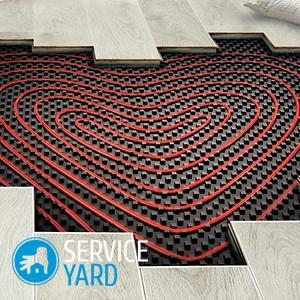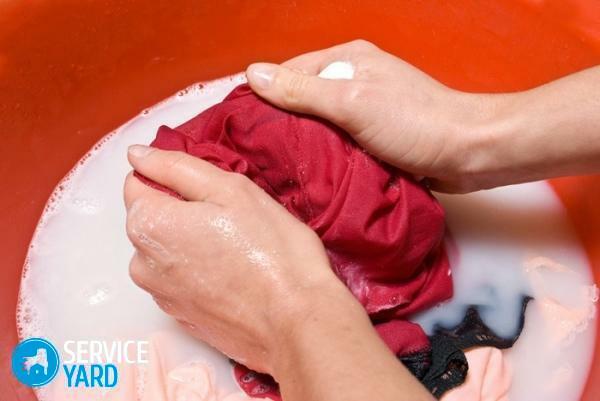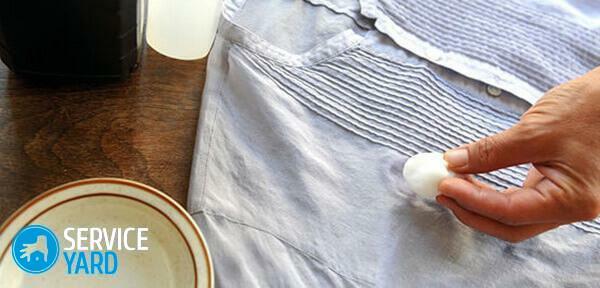
Filling the screed is one of the main moments of installing a warm floor. It is on how well this rather complex work is performed, the strength of the entire structure depends, as well as its appearance. Most often this stage is entrusted to professionals, but it can be done on their own. Which screed is better for a warm water floor, you will learn from our article.
to the contents ↑To the floor was warm
The installation of a warm floor is a time consuming and demanding task. Everything is important here:
- qualitative and precisely calculated scheme;
- material from which the pipes are made;
- flooring material;
- strict adherence to technology;
- the right choice of screed;
- compliance with all installation features.
Important! Correctly to calculate the circuit and well to lay pipes it is necessary before the coupler is executed. If it is already installed, there will be no free access to the heating system. A sudden error will result in a huge amount of work being done anew.
to content ↑Screed types
The screed for a warm water floor with your own hands can be one of the following types:
- connected to the base;
- floating;
- filled in the separating layer.
Bound
This kind of screed is rigidly fixed to the concrete base. There are no separating layers. To keep the pouring firmly, the floor must be carefully prepared:
- to remove dust;
- should be primed.
The main plus of the tie is that it can withstand very high mechanical loads. But there is also a very significant disadvantage - when drying, the construction sometimes changes its dimensions, and, very unevenly. Correspondingly, cracks are formed.
Important! This option is suitable for not very high rooms. The minimum thickness of the layer is 2.5 cm.
Floating
This is a separate, independent design, not related to the base. It is imposed such a screed necessarily on the waterproofing layer. Heat-insulating and sound-proof materials are used for manufacturing. It can be:
- mineral wool;
- wood-based panel;
- cork sheet;
- foamed polystyrene.
Important! The floating screed is thicker than the bound one - the layer can not be less than 5 cm.
On the separating layer
Such a construction is made on a concrete base. In this capacity, you can use:
- reinforced concrete slab;
- cement black fill.
The substrate is covered with a waterproofing film 0.2 mm thick or larger. The bands should be overlapped. They are glued together with a special adhesive tape, and the free edges that adjoin the walls are wrapped up.
Important! The thickness of the pouring can not be less than 3 cm.
Now you should be a little more clear what kind of screed is better for a warm water floor. But that is not all.
to the contents ↑About materials
There are different types of screeds. They can be:
- concrete;
- cement-sand;
- plaster;
- expanded clay;
- magnesia;
- with foam concrete.
For self-manufacturing of a warm floor, concrete and cement-cement fillings are most often used. They are suitable for all types of premises, including those where there is always high humidity. But it's worthwhile to learn a bit about other materials to understand which screed is better for a warm water floor.
Gypsum
Gypsum mixes for underfloor heating have appeared in construction shops relatively recently. Gypsum gives good protection from noise and provides reliable thermal insulation. It has a relatively low density. This is a fine-grained material that perfectly penetrates into any cracks. It is very important that the gypsum mixture does not burn.
Important! For the rooms such a screed will be very good, but for the bathroom - will not work, under the influence of moisture, the gypsum is deformed.
Expanded claydite
This is a variant of a sand-cement mixture with a special filler. Claydite is added in order to lay the screed better - its particles have very small dimensions, so it is easy to fill even microscopic holes.
Unlike the usual sand-cement mixture, before pouring keramzitnogo composition, no preparatory work is not necessary. It's enough just to sweep the floor. But this material absorbs moisture, so it is closed with PVC film.
Important! On the expanded clay mixture is similar to sand-gravel - it is laid on the same technology.

Magnesite
This is a very interesting composition, the components of which are:
- magnesite;
- mineral fillers;
- bischofite solution.
Important! This mixture is not suitable if metal parts were used for the installation of a warm floor - it causes corrosion. If it is necessary to use just such a composition, the metal elements will have to be covered with insulation.
Foamed concrete
A modern material, gaining increasing popularity, when it is worth choosing what kind of screed is better for a warm water floor. The material is different:
- monolithic structure;
- low weight.
- good sound insulation.
We make a sand-cement mixture
When asked what kind of screed to make for a warm floor, many will answer - concrete or sand-cement. These are relatively cheap and quite traditional options.
You will need:
- cement grade M300 and above.
- coarse sand;
- plasticizer( optional).
The solution should be thick enough, but at the same time, it should be laid without effort and do not give lumps when smoothing. The mixture is prepared as follows:
- For 50 kg of cement, take 200 kg of sand and 1.5 liters of water.
- Add 150 g of liquid soap.
- Mix thoroughly to obtain a homogeneous mass - this requires a building mixer.
Important! You will need another metal profile 20x40.
to content ↑Concrete mix
Sand-cement mixture is relatively simple, but it does not always work. Concrete is preferable in all respects. It is also possible to prepare a concrete-expanded clay mixture, which will give the screed more strength. In addition, this option gives better noise insulation.
Tools
All the necessary tools to fill the screed, you probably have. You need:
- shovel;
- trowel;
- building rule.
Preliminary work
Screed is the final stage of installing a warm floor. Before making a fill, the surface must be prepared. Fill the pipes - this is necessary to avoid their deformation. The water temperature should not be above 25 ° C.
to the contents ↑Pouring
Most often, the screed is made by beacons - small bulges. For them apply:
- gypsum;
- alabaster;
- is the same concrete mortar.
It is very important to correctly calculate the height of the lighthouses - water should flow in the system. To ensure that the concrete solution is kept on the surface, formwork is needed, and it is not possible to place it on pipes.
Important! In the building stores you can buy ready-made beacons.
Mounting the floor
Conveniently for the installation of a warm floor, adhere to this procedure.
- Prepare the substrate by removing dust from it.
- Spread out the plastic film on the plate.
- Place a layer of foam or mineral wool on it.
- Spread the heat reflective film.
- Lay the pipes.
- Cover them with reinforcing mesh.
- Pour walls with damper tape.
- Install the wooden formwork around the perimeter of the room so that it does not press on the pipes.
- Set the lighthouses.
- Prepare the solution.
- Perform the fill.
- Lay the expansion joints - grooves through the entire thickness of the layer( you can lay the slats and then get it).
- Align the layer and remove the bubbles - this can be done, for example, by rakes, but it is better to use a needle roller.
- Sex will be ready in about a month, although during this period you can walk on it.
Important! During work, periodically sprinkle the floor with water - this will prevent the appearance of cracks.
Where to lay the expansion joints?
Without such joints, the floor is easily deformed, and cracks will be formed anywhere. To prevent this from happening, experts recommend that the joints be laid as follows:
- If the room is not more than 16 square meters.m, lay the seams along the walls.
- In the large room, make extra stitches.
- Install a damper tape.
Important! Before filling the screed, draw the location of the pipes and do not forget to specify the exact dimensions.
In principle, now you have enough information not only to decide which screed is better for a warm water floor, but also to make it yourself. In this and wish you good luck!



